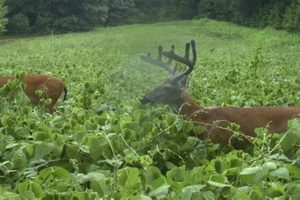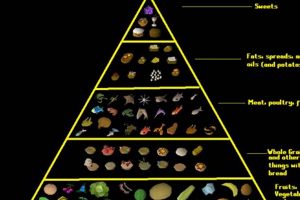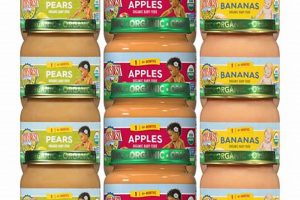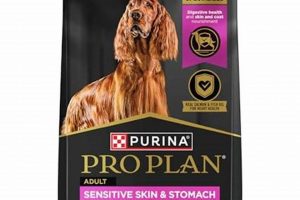The most effective bait for rodent traps is a critical factor in successful pest control. It refers to substances that rodents find highly attractive, increasing the likelihood they will enter the trap. Examples include peanut butter, chocolate, or seeds; these capitalize on rodents’ natural foraging behaviors and dietary preferences.
Employing a suitable attractant is essential for efficiently managing rodent populations, preventing property damage, and mitigating health risks associated with infestations. Historically, diverse items have been used, ranging from readily available kitchen scraps to commercially produced lures. The objective remains consistent: to entice the target animal into the trap quickly and reliably.
Further discussion will explore specific attractants, their efficacy under various conditions, considerations for placement, and the humane aspects of rodent control strategies.
Effective Utilization of Rodent Attractants
The selection and deployment of suitable attractants are paramount for successful rodent trapping. The following tips offer guidance on optimizing bait choices and placement to maximize trap effectiveness.
Tip 1: Prioritize High-Calorie Foods: Rodents are often drawn to foods rich in fats and carbohydrates. Peanut butter, chocolate, and hazelnut spread are examples of effective choices.
Tip 2: Consider Regional Food Availability: Rodent populations adapt to their environment. Identifying locally abundant food sources can inform bait selection, increasing its appeal.
Tip 3: Secure the Attractant: Ensure the chosen attractant is firmly affixed to the trap’s trigger mechanism. This prevents rodents from removing the bait without activating the trap.
Tip 4: Minimize Human Scent: Rodents possess a keen sense of smell. Wearing gloves when handling traps and attractants reduces the likelihood of deterring them with human scent.
Tip 5: Refresh the Attractant Regularly: Over time, attractants can lose their potency or become contaminated. Replace the bait every few days, or sooner if it appears compromised.
Tip 6: Experiment with Variety: If initial attempts are unsuccessful, diversify attractant offerings. A combination of sweet, savory, and oily options may prove more effective.
Tip 7: Pre-Bait Strategically: Prior to setting the trap, place small amounts of the chosen attractant near the trap location for several days. This can acclimate rodents to the area and increase their confidence in approaching the trap.
Effective attractant use requires careful consideration of rodent behavior and environmental factors. Implementing these strategies enhances the probability of successful trapping and contributes to effective rodent control.
The following section will delve into the importance of trap placement and its impact on overall rodent management effectiveness.
1. Palatability
Palatability is a primary determinant in the effectiveness of rodent attractants. It refers to the degree to which a substance is appealing and acceptable to a rodent’s taste and sensory preferences. Attractants exhibiting high palatability are more likely to draw rodents towards a trap and encourage consumption, thereby triggering the capture mechanism. The cause-and-effect relationship is direct: higher palatability translates to increased attraction and a greater likelihood of trapping success. For example, peanut butter, known for its high-fat content and strong aroma, is often more palatable to rodents than plain grains, leading to a higher capture rate when used as bait.
The selection of a palatable attractant must consider the specific rodent species being targeted. Different species exhibit varying dietary preferences. What is palatable to one species may be less appealing to another. Furthermore, environmental factors and available food sources influence palatability. In environments where rodents primarily consume seeds, an attractant consisting of nuts or peanut butter might offer a more palatable and novel alternative, outcompeting the rodents’ usual food sources. The practical significance lies in tailored attractant selection based on the species and environment to optimize trap efficacy. The use of stale, dry or moldy bait will drastically affect the Palatability of the selected attractant.
In summary, palatability is a crucial component of successful rodent trapping. Understanding the palatability preferences of target species, considering environmental food availability, and ensuring bait freshness are vital factors. Challenges remain in identifying universally palatable attractants due to species-specific differences and environmental variations. Understanding and addressing these factors contributes to more effective and humane rodent control strategies.
2. Accessibility
Accessibility, in the context of rodent control, denotes the ease with which a rodent can reach and interact with a specific attractant within a trap. Effective attractants are rendered useless if physically inaccessible. The attractant’s placement and presentation directly impact whether a rodent can successfully engage with it, triggering the trapping mechanism. Inaccessibility undermines the inherent appeal of even the most palatable substance, thereby diminishing trapping effectiveness. For example, if peanut butter, a typically effective attractant, is placed deep within a trap’s trigger mechanism, forcing the rodent to fully enter the trap to reach it, the rodent may be deterred by the unfamiliar environment. Conversely, if the attractant is partially exposed or easily accessible from the trap’s entrance, the rodent is more likely to investigate and activate the trap.
The practical applications of understanding accessibility are evident in trap design and setup. Traps with enclosed bait compartments may reduce accessibility, hindering a rodent’s ability to detect or reach the attractant. Similarly, an excessive quantity of attractant could inadvertently obstruct the trigger mechanism, preventing activation even if the rodent attempts to feed. Optimal trap design prioritizes easy access to the attractant while simultaneously requiring sufficient interaction to initiate the trapping process. Wire mesh traps, for instance, often provide superior accessibility compared to fully enclosed plastic traps, allowing rodents to readily detect the scent and visual cues of the attractant. Consideration must also be given to the physical capabilities of the target species; smaller rodents require smaller openings and less resistance to trigger activation.
In summary, accessibility is a critical determinant of rodent trapping success. Overlooking accessibility negates the effectiveness of even the choicest attractants. Factors such as trap design, attractant placement, and species-specific physical capabilities must be carefully considered to optimize accessibility. The challenge lies in balancing accessibility with the need to ensure trigger activation, thereby maximizing trapping efficiency and contributing to effective rodent population management. Future innovation in trap design could focus on improving accessibility while maintaining a humane and effective trapping process.
3. Scent Profile
The scent profile constitutes a critical element in determining effective rodent attractants. A substance’s aromatic compounds directly influence its ability to draw rodents from a distance, guiding them toward a trap. The scent acts as an initial signal, overriding other sensory inputs, particularly in environments where visibility is limited. If an attractant possesses a weak or undetectable scent profile, its effectiveness diminishes significantly, regardless of its taste or nutritional value. For instance, peanut butter’s strong, persistent aroma, resulting from its volatile fatty acids and roasted nut compounds, makes it an effective attractant compared to unscented vegetable shortening.
The practicality of understanding scent profiles extends to the selection of appropriate attractants for specific environmental conditions. In outdoor settings, where competing odors are prevalent, stronger scent profiles become paramount. Substances like bacon grease or fish-based cat food, characterized by pungent aromas, may outperform traditionally favored options such as peanut butter. Conversely, in enclosed spaces with less air circulation, milder scents, such as chocolate, can be sufficiently effective. Moreover, the scent profile’s persistence is crucial. Attractants with volatile compounds that dissipate quickly necessitate more frequent replacement to maintain their drawing power. The careful use of a scent is also helpful because it is easier to attract a mouse that is further away than one that is already up close, for which it will need a flavor it knows.
In summary, the scent profile is an indispensable attribute of effective rodent attractants. It facilitates long-range attraction and overcomes environmental scent competition. Factors such as scent intensity, persistence, and species-specific preferences warrant careful consideration. The ongoing challenge lies in identifying and formulating attractants with stable, highly attractive scent profiles that are resistant to degradation and adaptable to diverse environmental conditions. Furthermore, research into rodent olfactory receptors could unlock new avenues for developing highly targeted and effective attractants. Future rodent control innovations should prioritize scent profile optimization.
4. Food availability
The prevalence and types of food sources accessible to rodent populations directly influence the selection of optimal attractants. Existing food options dictate the novelty and appeal of potential baits used in traps. Understanding local food resources is paramount to effective rodent control strategy.
- Novelty Preference
When food is scarce, rodents are less selective and may readily consume available options. However, when a consistent and abundant food supply exists, rodents often exhibit neophilia, or a preference for novel food sources. Introducing attractants that differ significantly from the rodents’ typical diet can increase trap effectiveness.
- Dietary Staple Saturation
If a particular food source is consistently available and constitutes a significant portion of a rodent’s diet, the attractiveness of that item as bait diminishes. For instance, in agricultural areas with abundant grain stores, using grain-based baits might prove less effective than introducing high-fat or protein-rich alternatives like peanut butter or bacon.
- Seasonal Variability
Food availability fluctuates with seasonal changes. During periods of scarcity, such as winter months or following crop harvesting, rodents are more inclined to sample diverse food sources. Adjusting attractant choices to align with seasonal food availability gaps enhances trap efficacy. An example would be using fruit-based attractants when natural fruit sources are out of season.
- Competition and Dominance
In areas with high rodent populations, competition for food intensifies. Dominant individuals may monopolize readily available resources, leaving subordinate rodents to seek alternative food sources. Providing diverse attractant options can cater to the varied preferences and resource access levels within the rodent population.
The interplay between food availability and attractant selection is critical for optimizing rodent control efforts. A comprehensive assessment of prevalent food sources, seasonal fluctuations, and population dynamics ensures that chosen attractants offer a compelling alternative, leading to increased trapping success.
5. Trap location
Trap location and attractant selection are inextricably linked in effective rodent control. The placement of a trap determines the likelihood of a rodent encountering the attractant, and the attractant’s appeal influences whether the rodent will investigate once in proximity. Incorrect placement, even with a highly palatable attractant, renders the trapping effort futile. For example, a trap baited with peanut butter, placed in an open area away from rodent pathways, will likely remain untouched. Conversely, the same trap, placed along a wall where rodents typically travel, significantly increases the probability of capture.
The impact of trap location extends beyond simply placing a trap in an area of known rodent activity. Strategic placement considers factors such as rodent behavior, environmental conditions, and potential competing food sources. Placing traps near potential nesting sites, food storage areas, or water sources optimizes encounter rates. Furthermore, varying trap placement strategies, such as alternating between floor-level and elevated positions, can target different rodent behaviors. A professional pest control operator, for instance, might strategically place traps in dark, secluded corners of a kitchen where crumbs often accumulate, using high-fat attractants to exploit the rodents’ scavenging habits. Also place the traps in routes where they are most likely to travel.
Effective rodent control necessitates a holistic approach that integrates attractant selection and trap placement. The two elements are interdependent; a superior attractant cannot compensate for poor placement, and strategic placement cannot overcome the limitations of an unappealing attractant. Understanding the interplay between these factors enhances trapping efficiency and minimizes reliance on potentially harmful rodenticides. The ongoing challenge lies in adapting trap placement strategies to dynamic environmental conditions and evolving rodent behaviors. Future rodent management efforts must prioritize integrated solutions that account for the intricate relationship between trap location and attractant efficacy.
6. Bait freshness
Bait freshness is a critical component of effective rodent control and directly impacts the success of rodent attractants. An attractant’s palatability and scent profile degrade over time, diminishing its effectiveness. The term ‘freshness’ encompasses not only the time elapsed since the attractant was prepared but also the storage conditions and environmental factors that can accelerate degradation. If an attractant becomes stale, moldy, or desiccated, its appeal to rodents decreases significantly, reducing the likelihood of trap activation. For example, peanut butter, a commonly used attractant, can become hard and lose its distinctive aroma when exposed to air, rendering it less attractive to rodents than a freshly opened jar. The practical consequence is a reduced capture rate and prolonged infestation.
The importance of bait freshness extends beyond mere palatability. As bait degrades, it may also become a breeding ground for bacteria or insects, further deterring rodents. Contamination can introduce competing scents or render the bait unpalatable due to altered texture or taste. The frequency with which bait needs to be replaced depends on factors such as temperature, humidity, and the presence of other pests. In warm, humid environments, bait may degrade more rapidly, necessitating more frequent replacement. Commercial rodent bait stations often incorporate features designed to protect bait from environmental degradation, such as sealed compartments and moisture-resistant formulations. Replacing bait every few days, or sooner if signs of spoilage are apparent, is crucial for maintaining trap effectiveness.
In summary, bait freshness is a non-negotiable element of effective rodent control. Freshness ensures that the attractant retains its palatability, scent profile, and overall appeal to rodents. The practical challenge lies in monitoring bait conditions and implementing a regular replacement schedule. Understanding the factors that contribute to bait degradation and adopting appropriate storage and maintenance practices maximizes trap effectiveness and minimizes the duration of rodent infestations. Future advancements may involve developing bait formulations with enhanced shelf life or incorporating indicators of freshness to simplify maintenance protocols.
Frequently Asked Questions
This section addresses common inquiries regarding the selection and utilization of appropriate rodent attractants for effective trapping strategies.
Question 1: What constitutes the ideal rodent attractant?
The optimal attractant is highly palatable, possesses a strong scent profile, remains fresh for an extended period, and is readily accessible within the trap. It should also be a novel food source relative to the rodent’s existing diet.
Question 2: How does environmental food availability impact attractant selection?
Rodents are more likely to be drawn to novel food sources when their staple foods are abundant. A thorough understanding of prevalent food resources in the environment informs the selection of attractants that offer a compelling alternative.
Question 3: What role does scent play in rodent attraction?
Scent is a primary means by which rodents locate food sources. Attractants with potent, lingering aromas are more effective in drawing rodents from a distance, especially in outdoor environments with competing odors.
Question 4: How often should rodent attractants be replaced?
Bait freshness is crucial. Attractants should be replaced every few days, or sooner if there are signs of spoilage or degradation, such as dryness, mold, or insect infestation.
Question 5: Are commercially available rodent attractants superior to household items?
Commercially available attractants often offer enhanced formulations, longer shelf life, and protection against environmental degradation. However, household items like peanut butter can be effective if used properly and replaced frequently. The choice depends on the specific application and desired level of control.
Question 6: How does trap placement influence attractant effectiveness?
Strategic trap placement is paramount. Traps should be placed along rodent pathways, near nesting sites, and in areas with known rodent activity. Even the most appealing attractant will be ineffective if the trap is located in an inaccessible or infrequently visited area.
Effective rodent control hinges on a comprehensive understanding of attractant properties, environmental conditions, and rodent behavior. Strategic implementation of these principles contributes to a more successful and humane trapping strategy.
The subsequent discussion will explore ethical considerations within the realm of rodent management.
Concluding Remarks on Rodent Attractant Efficacy
The foregoing exploration of “best mouse trap food” underscores the multifactorial nature of successful rodent control. The efficacy of any given attractant is contingent upon palatability, accessibility, scent profile, environmental food availability, strategic trap location, and sustained bait freshness. A deficiency in any of these areas compromises the overall trapping outcome. Therefore, a comprehensive and nuanced approach, accounting for the interplay of these elements, is essential for effective rodent population management.
Effective rodent control demands a commitment to evidence-based strategies, informed by a thorough understanding of rodent behavior and environmental dynamics. Vigilant application of these principles promotes both successful mitigation of rodent infestations and responsible stewardship of public health and property. Continued research into novel attractant formulations and optimized trapping methodologies remains crucial for addressing evolving challenges in rodent management.







